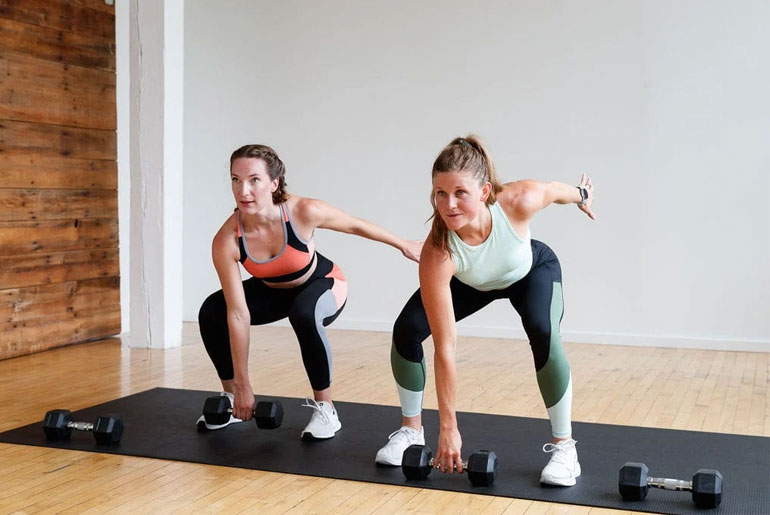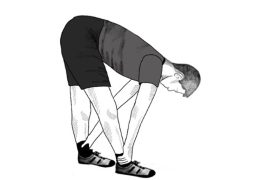HIIT has indeed become a popular and effective workout trend with lasting appeal in the fitness world. Its roots can be traced back to the early 1900s, with Finnish Olympic runners using alternating bursts of high intensity and brief recovery periods to enhance their speed. Today, HIIT is recognized as one of the “Top 20 Worldwide Fitness Trends” by the American College of Sports Medicine.
Despite its popularity, there are various interpretations of what constitutes a HIIT workout, leading to confusion among people about its true nature. A genuine HIIT session involves several rounds of short, intense cardiovascular bursts, typically lasting not more than 20 seconds, followed by brief periods of rest. This structure allows for a highly effective workout that can produce substantial fitness results in just around 30 minutes. Another advantage of HIIT is that it usually requires little to no equipment, and you can choose your preferred method of cardio.
To achieve true high intensity in a HIIT workout, one must work hard and push their limits. The goal is to get the heart rate above 80 percent of its absolute maximum during the intense bursts and then allow it to recover slightly before repeating the cycle.
When incorporated into a well-rounded fitness regimen that includes standard cardio exercise and strength training, HIIT can offer several benefits, such as:
- Improved Overall Fitness: HIIT challenges both the cardiovascular and muscular systems, leading to improved endurance, strength, and flexibility.
- Better Health Metrics: HIIT has been shown to positively impact various health markers, including blood pressure, blood sugar levels, and cholesterol levels.
- Increased Calorie Burn: Due to the intense nature of the workout, HIIT can elevate the body’s metabolic rate, leading to increased calorie burning even after the workout is over.
- Enhanced Sports Performance: The combination of cardiovascular and muscular conditioning in HIIT can lead to better performance in competitive sports and athletic activities.
To make the most of HIIT, it’s crucial to maintain proper form during exercises and progress gradually. Beginners should start with shorter intervals and gradually increase the intensity and duration as they build stamina and fitness levels.
As with any workout program, it’s essential to listen to your body, and if you have any health concerns or conditions, consult with a fitness professional or healthcare provider before starting a new exercise routine. HIIT can be an efficient and enjoyable way to achieve fitness goals and maintain overall health when done correctly and safely.
“Make your intensity hard enough that you can’t hold a conversation, then recover and begin again,” stated Danyele Wilson, a trainer and coach for the fitness app EvolveYou.
“That’s key, and what sets HIIT apart from other workouts,” stated Ms. Wilson. “Holding a plank for a minute isn’t going to get your heart rate there, for instance. You need to feel like you couldn’t go all out with this movement for more than eight to 10 seconds at a time.”

Why HIIT?
The main reason why many people choose to incorporate High-Intensity Interval Training (HIIT) into their exercise routine is its potential to produce significant cardiovascular fitness gains in a relatively short amount of time. Research from a 2019 review highlighted that HIIT is a more efficient approach to aerobic training compared to traditional steady-state cardio exercises, where the heart rate is maintained at a consistent level for an extended period.
Furthermore, a small study in 2020 involving sedentary men aged 43 to 73 demonstrated that engaging in HIIT for just six weeks resulted in a notable decrease in high blood pressure. This finding suggests that HIIT can have positive impacts on heart health.
In addition to improving heart health, many people choose HIIT as a means to lose weight, Cedric Bryant, president and chief science officer of the American Council on Exercise, stated. “You’re getting a higher average calorie burn from HIIT than a steady-state session for the same amount of time.”
However, beyond the cardiovascular benefits, many individuals also incorporate HIIT to improve overall performance, whether they are competitive athletes or not. Training with HIIT can help the body move more efficiently and with greater agility, leading to improved physical performance in various activities and sports.
For some individuals like Sunna Yassin, a 42-year-old event planner, HIIT may initially pose challenges, especially on the joints. However, as they become stronger and adapt to the training, they may find that HIIT enables them to engage in other activities they enjoy, as it enhances their overall fitness level.
“It’s improving your capacity to move well in different directions,” she said. “That can mean anything from LeBron James on the basketball court to an elderly man preventing himself from falling after tripping. It’s about quality of life.” That said, you may want to talk to your doctor or physical therapist before incorporating HIIT into your workout.
the chief reasons to consider HIIT as part of an exercise routine are its potential to improve cardiovascular fitness, its time efficiency, and its ability to enhance overall physical performance and agility. As with any workout program, it’s important to progress gradually and listen to your body to avoid injuries and make the most of the benefits HIIT has to offer.
Over the course of 18 months, Ms. Yassin said, “my body became better able to take the pressure of activities like kickboxing or jumping.”
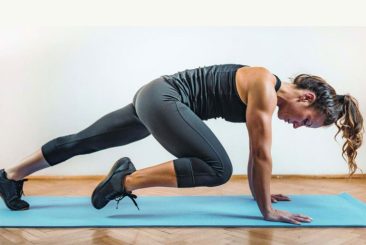
What is “real” HIIT?
“Real” High-Intensity Interval Training (HIIT) is a specific type of workout that involves short bursts of intense exercise followed by brief periods of rest or low-intensity activity. The confusion around what constitutes true HIIT arises because some gyms or trainers may incorrectly label any circuit training or interval-based workout as HIIT, even if it doesn’t meet the necessary criteria.
A genuine HIIT session adheres to the following key characteristics:
- High Intensity: The intense intervals require the individual to exert near-maximal effort during each burst of exercise. This effort should elevate the heart rate significantly.
- Short Duration: The intense intervals typically last for about 20 to 40 seconds, and they are followed by equally short periods of rest or active recovery.
- Elevated Heart Rate: During the intense intervals, the heart rate should reach at least 80% of the individual’s maximum heart rate. This is crucial for achieving the cardiovascular benefits of HIIT.
- Repetition and Variation: HIIT workouts involve repeating the intervals for several rounds, with variations in exercises or intensity to keep the workout challenging and effective.
It’s important to differentiate between interval training and true HIIT. For instance, a runner sprinting for three to five minutes with rests in between is engaging in interval training but may not meet the criteria for true HIIT if the bursts are too long and the heart rate doesn’t reach the required intensity.
CrossFit is another workout people commonly mistake for HIIT, said Ms. Wilson. “CrossFit is not HIIT, although a CrossFit workout may enlist an HIIT circuit within it,” she explained. “But they are not one and the same.”
A genuine HIIT session can be relatively short, with the intense portion lasting as little as 10 minutes, especially for beginners. However, it is essential to include warm-up and cool-down periods as part of the workout routine. The warm-up prepares the body for the intense activity, while the cool-down allows the body to gradually return to its resting state and reduces the risk of injury.
In summary, “real” HIIT is a specific and structured workout that involves short bursts of intense exercise, elevated heart rate levels, short periods of rest, and repetition of intervals. It is an efficient way to improve cardiovascular fitness and overall conditioning. To ensure you are performing true HIIT, pay attention to the intensity, duration, and heart rate during the intense intervals, and incorporate proper warm-up and cool-down periods into your routine.

How do you get started?
High-Intensity Interval Training (HIIT) can be an effective and time-efficient workout option, but there are important considerations for beginners and those with certain health conditions. If you have a cardiac condition, are recovering from an injury, or regularly experience vertigo, it’s best to avoid HIIT. Pregnant individuals should consult their doctor before starting HIIT.
For beginners, it’s normal to feel challenged initially, and you may need to shorten the length of intervals to catch your breath. However, with regular practice, improvements in fitness and endurance can be noticed within about a month of consistent HIIT sessions.
“I might pair it with leg day, for instance,” she said, doing “super sets” of combined movements like squats and lunges, and then finishing with a 10-minute HIIT workout.
Once you are comfortable with them, aim for two to three sessions per week, but not more, said Holly Roser, a personal trainer in San Francisco. “After that, you could become more susceptible to injury.”
HIIT can be performed at home, at the gym, or in a group class setting. The workout requires little to no equipment, but access to a treadmill, bike, or rowing machine can add variety. Bodyweight exercises like running, jumping jacks, burpees, mountain climbers, or squat jumps are also effective options. The convenience of HIIT makes it suitable for those who travel frequently.
Remember to progress gradually, listen to your body, and adjust the intensity and duration of intervals as you improve. Safety is essential, so always consult with a fitness professional or healthcare provider if you have any health concerns before starting a HIIT routine. With dedication and proper guidance, HIIT can lead to enhanced cardiovascular fitness and overall health.
Remember, these workouts are meant to be hard. In the moment, pushing yourself to 80 percent of your body’s maximum heart rate may feel intimidating, but it can also feel rewarding, said Melissa Vasquez, a 31-year-old Brooklyn sales professional. “I like to do a workout that scares me a bit,” she said. “After finishing a HIIT session, I feel very satisfied for facing down that challenge.”
The simplest HIIT workout
The simplest HIIT workout for beginners involves selecting a single cardio-focused exercise, with the treadmill being a suitable and approachable option. After a warm-up to prepare the body, the workout consists of a 10-second sprint at maximum effort, followed by 50 seconds of rest or walking. This sprint-rest cycle is repeated six times to complete the workout.
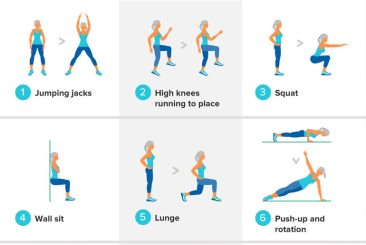
The main goal of this beginner friendly HIIT workout is to ease individuals into the format and intensity gradually. It allows newcomers to experience the high-intensity bursts of exercise while providing ample time for recovery in between.
As beginners become more comfortable with the workout, they have the option to challenge themselves further by shortening the rest periods. The rest periods can be reduced to 20 seconds and eventually down to 10 seconds, adding an extra level of intensity and pushing the limits of their cardiovascular fitness.
By starting with this simple HIIT workout and progressively adjusting the intervals, beginners can gradually build their stamina and endurance. The workout is adaptable and can be tailored to individual fitness levels and preferences. As individuals get accustomed to the HIIT format, they may explore other exercises and variations to keep their workouts engaging and effective.
As with any new exercise regimen, it is essential to prioritize safety and listen to one’s body. Beginners should consult with a fitness professional or healthcare provider if they have any health concerns before starting a HIIT routine. With consistency and dedication, this simple HIIT workout can be an effective way to improve cardiovascular fitness and overall health.
Tabata workout
The Tabata workout is an intense form of High-Intensity Interval Training (HIIT) that combines multiple exercises over several rounds. Each Tabata round lasts four minutes and consists of eight sets, with 20 seconds of hard exercise followed by 10 seconds of rest. Trainers often recommend doing four rounds, but beginners can start with two rounds if needed.
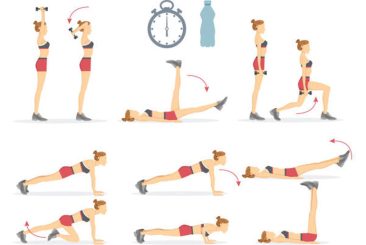
The workout begins with a five-minute warm-up to prepare the body. During each set, the goal is to perform as many repetitions as possible within the 20 seconds of exercise. After each round, take a one-minute rest before proceeding to the next round. Ideally, the workout should include four rounds. The session concludes with a 10-minute cool-down.
To keep track of the timing, using a workout app with signals for each break can be helpful.
Given the high intensity of Tabata, beginners are advised to limit the number of weekly sessions to one or two at the start. As the body becomes more accustomed to the intense workout, the frequency can be increased to up to three times per week.
Here is an example of a Tabata-style HIIT workout that requires minimal equipment:
Round 1 (4 minutes):
- 2 sets of high knees
- 2 sets of plank punches
- 2 sets of jumping jacks
- 2 sets of side skaters
Round 2 (4 minutes):
- 2 sets of jump rope
- 2 sets of high/low boat
- 2 sets of line jumps
- 2 sets of push-ups
Round 3 (4 minutes):
- 2 sets of burpees
- 2 sets of Russian twists
- 2 sets of squats
- 2 sets of lunges
Round 4 (4 minutes):
- 2 sets of mountain climbers
- 2 sets of push-ups
- 2 sets of split squats
- 2 sets of box jumps
Throughout the workout, it’s essential to listen to your body and stop if you feel lightheaded, dizzy, or too out of breath to continue. As you progress and become more familiar with the exercises, feel free to swap in new movements for variety and to suit your body’s needs.
Disclaimer:
The information contained in this article is for educational and informational purposes only and is not intended as a health advice. We would ask you to consult a qualified professional or medical expert to gain additional knowledge before you choose to consume any product or perform any exercise.

